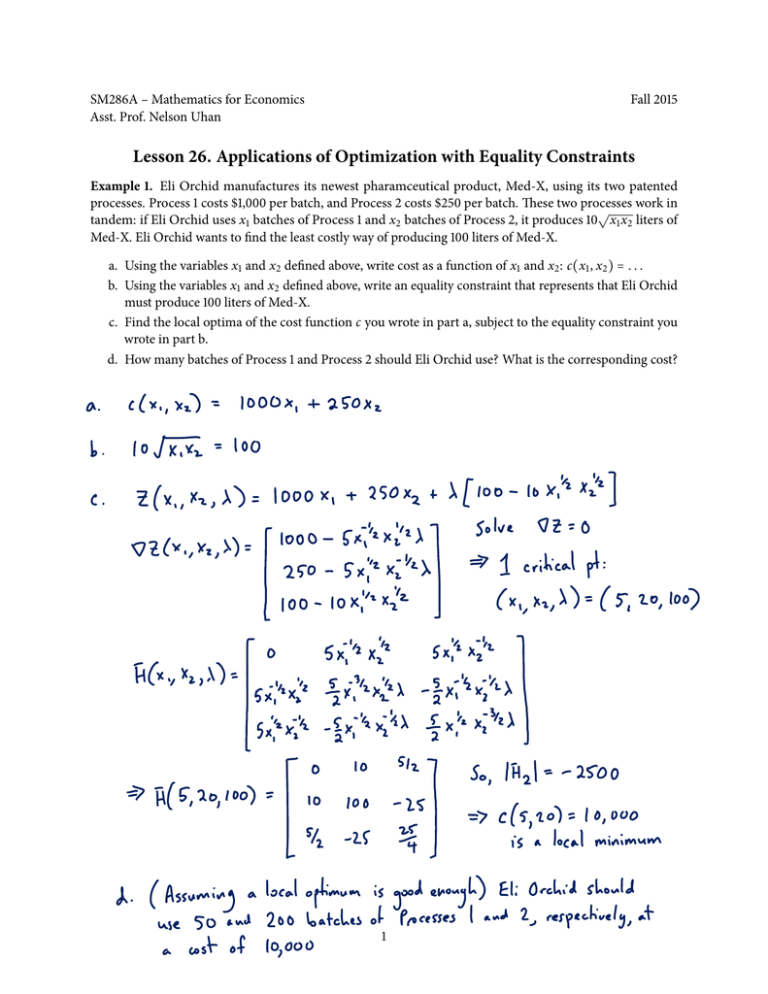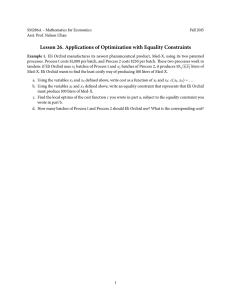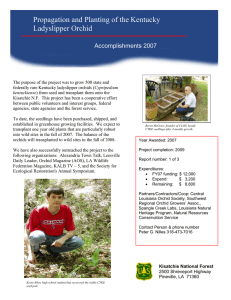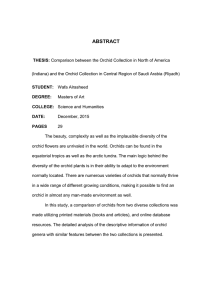Lesson ��. Applications of Optimization with Equality Constraints
advertisement

SM���A – Mathematics for Economics Asst. Prof. Nelson Uhan Fall ���� Lesson ��. Applications of Optimization with Equality Constraints Example �. Eli Orchid manufactures its newest pharamceutical product, Med-X, using its two patented processes. Process � costs ��,��� per batch, and Process � costs ���� per batch. �ese two processes work in √ tandem: if Eli Orchid uses x� batches of Process � and x� batches of Process �, it produces �� x� x� liters of Med-X. Eli Orchid wants to �nd the least costly way of producing ��� liters of Med-X. a. Using the variables x� and x� de�ned above, write cost as a function of x� and x� : c(x� , x� ) = . . . b. Using the variables x� and x� de�ned above, write an equality constraint that represents that Eli Orchid must produce ��� liters of Med-X. c. Find the local optima of the cost function c you wrote in part a, subject to the equality constraint you wrote in part b. d. How many batches of Process � and Process � should Eli Orchid use? What is the corresponding cost? � Example �. Suppose that you are interested in dividing your savings between three mutual funds with expected returns of ��%, ��% and ��%, respectively. You want to minimize risk while achieving an expected return of ��%. To measure risk, use the variance of the return on investment: when a fraction x of your savings is invested in Fund �, y in Fund �, and z in Fund �, the variance of the return has been calculated to be v(x, y, z) = ���x � + ���y� + ���x y + ����z � + ���yz a. Consider the equality constraints below. Why do these constraints make sense for this problem? �.��x + �.��y + �.��z = �.�� x+y+z =� b. Find the local optima of the variance v, subject to the equality constraints given in part a. c. How much should you invest in the three mutual funds? � (�) (�)





